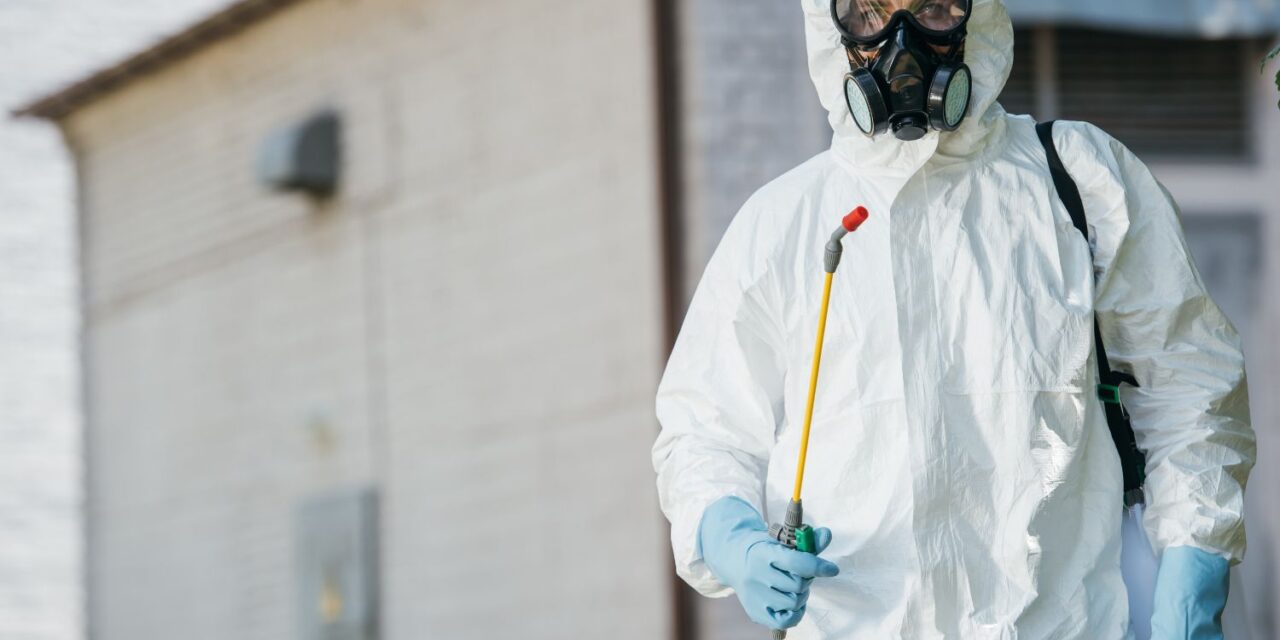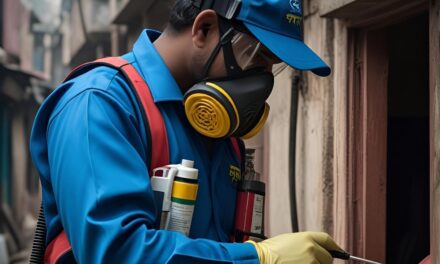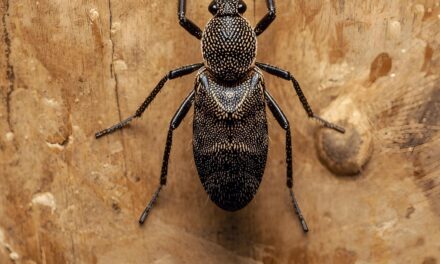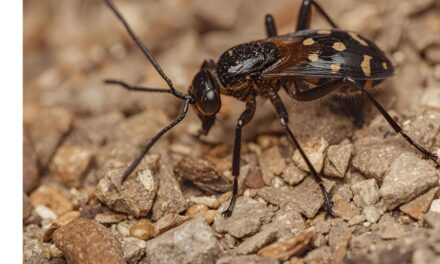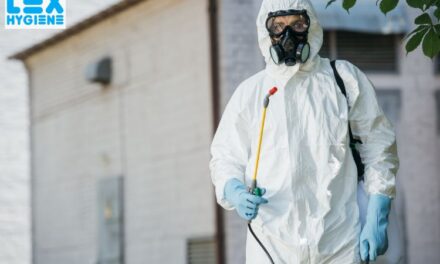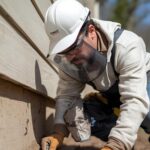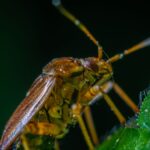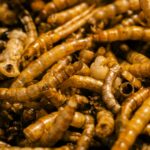Estimated reading time: 15 minutes
Key Takeaways
- Termites are “silent destroyers” causing billions in damage annually, often not covered by insurance.
- The comprehensive termite control process explained involves initial inspection, customized treatment planning, implementation, and vital post-treatment monitoring.
- Homeowners have options, including traditional chemical methods and growing **eco-friendly termite control solutions** like bait systems, heat/cold treatments, and beneficial nematodes.
- Integrated Pest Management (IPM) combines various strategies, prioritizing environmentally less harmful solutions for sustainable protection.
- Regular termite inspections are crucial for early detection, preventing extensive damage, maintaining property value, and identifying conducive conditions.
Table of contents
- The Termite Control Process Explained: Your Comprehensive Guide to Protecting Your Home with Eco-Friendly Solutions
- Understanding the Importance of Termite Control
- The Step-by-Step Termite Control Process Explained
- Choosing Your Approach: Termite Control Chemicals vs. Non-Chemical Methods
- Embracing Eco-Friendly Termite Control Solutions
- The Crucial Benefits of Regular Termite Inspections
- Conclusion: Your Path to a Termite-Free Home
- Frequently Asked Questions
Understanding the Importance of Termite Control
Understanding the termite control process explained is incredibly important for every homeowner. These tiny insects can cause big problems, often without you even knowing they are there. They are true “silent destroyers” because they work behind the scenes, eating away at your home’s structure. This can lead to very serious and costly damage to houses and businesses long before anyone notices their presence.
Termites feed on cellulose, which is found in wood, paper, and even some fabrics. This means they can compromise a building’s strength and safety over time. For example, subterranean termites, a common type, cause billions of dollars in damage across the U.S. every year. What’s more, this kind of damage is often not covered by standard homeowner’s insurance policies, leaving homeowners to pay for repairs out of pocket. (Source: various university extension services)
Because of this hidden threat, taking proactive steps is crucial. Finding termites early and managing them consistently are key to keeping damage and repair costs low. This blog post will take a deep dive into the complete termite control process explained. We will explore different strategies, including modern eco-friendly termite control solutions. We will also compare termite control chemicals vs. non-chemical methods to help you understand your options. Finally, we’ll highlight the critical benefits of regular termite inspections to keep your home safe and sound.
The Step-by-Step Termite Control Process Explained
The termite control process explained typically involves several key steps. These steps make sure that any treatment is effective and targets the termites exactly where they are. Let’s break down each stage of this important pest management journey.
1. Initial Inspection & Assessment (A Critical Step for Effective Termite Control)
This first step is the foundation of all successful termite management. A skilled pest control expert will do a very thorough check of your property. They look both inside and outside your home to find any signs of these destructive pests.
- Identifying Termite Species: This is super important because how you treat termites changes a lot depending on what kind they are. Experts can tell the difference between subterranean termites, drywood termites, and dampwood termites by looking for specific clues.
- Subterranean Termites: You might see mud tubes, which are little tunnels made of soil and wood. You might also find their discarded wings or hear wood that sounds hollow when tapped. These termites live in the soil and build tunnels to reach wood.
- Drywood Termites: Signs of these termites often include frass. This is their pellet-like droppings. You might also notice damaged wood that doesn’t show external mud tubes.
- Finding Entry Points: The technician will look for places where termites might be getting into your home. This could be cracks in the foundation, openings around pipes or wires, or wood that touches the soil directly.
- Assessing Damage: They will also estimate how much damage has already been done. This helps them understand how big the problem is.
- Noting Conducive Conditions: The expert will point out things around your home that attract termites. This includes too much moisture, piles of wood near your house, or leaky pipes.
The importance of this step cannot be overstated. It tells the pest control team what type of termite you have, how bad the infestation is, and the best way to treat it. This ensures that the treatment plan is correct, efficient, and uses resources wisely. This initial inspection is one of the key benefits of regular termite inspections, helping to catch problems early.
2. Developing a Customized Treatment Plan
After the inspection, the findings are used to create a special treatment plan just for your home. There is no single solution that works for everyone, so a customized approach is essential.
- Influencing Factors: Several things help decide what kind of treatment plan is best:
- Termite Type: Subterranean termites, who live in the ground, usually need treatments applied to the soil or bait systems. Drywood termites, who live inside wood, might be treated with fumigation (tenting), heat, or treatments put right into the wood.
- Severity of Infestation: If there are only a few termites in one small area, a targeted treatment might work. But if termites are everywhere, a more complete approach will be needed.
- Property Structure: The way your home is built, its foundation, whether it has a basement or crawl space, and your garden all affect what treatments can be used and how well they will work.
- Homeowner Preferences: Your choices also matter. This includes if you prefer eco-friendly termite control solutions, what your budget is, and how quickly you want to see results.
3. Implementation of Treatment
Once the plan is ready, trained and licensed professionals will apply the treatment. They follow strict safety rules and product instructions very carefully.
- Treatment Strategies:
- Barrier Treatments (Liquid Termiticides): For subterranean termites, special liquids called termiticides are sprayed into the soil around your home’s foundation. This creates a treated area that termites cannot cross. Modern non-repellent termiticides (like fipronil, imidacloprid, and chlorantraniliprole) are very effective. Termites don’t even know they are tunneling through the chemical. They pick it up and then spread it to other termites in their colony, which eventually destroys the whole colony. (Source: university extension services like UC IPM, Purdue Extension)
- Bait Systems: These involve placing special stations in the ground around your property. Inside these stations is a slow-acting insect growth regulator (IGR), like hexaflumuron or noviflumuron, or another kind of poison. Termites eat the bait, take it back to their colony, and share it. This slowly wipes out the entire colony. This method is often seen as more environmentally friendly because it uses chemicals in a very targeted way, reducing the overall amount of pesticides used. (Source: EPA)
- Localized/Spot Treatments: These are for specific areas. For drywood termites, this might mean injecting termiticides directly into their tunnels (galleries). Other methods can include using electricity, heat, or cold treatments for small, infested spots.
- Fumigation: If drywood termite infestations are very bad or spread out through the whole house, the entire structure might be tented. Then, a special gas pesticide, like sulfuryl fluoride, is pumped inside. This gas gets into all the wood in the building and kills the termites.
4. Post-Treatment Monitoring and Follow-Up
It’s important to remember that termite control is often a continuous effort. After the initial treatment, ongoing monitoring is vital. This helps confirm that the treatment worked well and catches any new termite activity quickly.
Many professional treatments come with guarantees or warranties. These often include follow-up inspections. This ensures that any leftover termites are dealt with right away and that your property stays protected for a long time. Regular checks help prevent new infestations and keep the original treatment working properly. This ongoing protection is another key part of the benefits of regular termite inspections.
Choosing Your Approach: Termite Control Chemicals vs. Non-Chemical Methods
When it comes to getting rid of termites, a common question homeowners ask is about termite control chemicals vs. non-chemical methods. Both approaches have their strengths and weaknesses. Let’s look at them closely.
A. Chemical Control Methods
These methods use man-made pesticides, called termiticides, to kill termites. They are a powerful way to eliminate these pests.
- Explanation:
- Liquid Termiticides: These are applied to the soil around your home. Common active ingredients include fipronil, imidacloprid, and chlorantraniliprole. Modern types are “non-repellent,” meaning termites don’t avoid them. Instead, they crawl through the treated soil, pick up the chemical, and pass it to other termites when they clean each other or share food. This leads to the entire colony collapsing.
- Fumigation: This method uses gas pesticides, such as sulfuryl fluoride. It’s mainly used for drywood termites. The whole house is covered with a tent, and the gas fills the space, getting into all the wood and killing termites hidden inside.
- Bait Systems: While considered targeted, bait systems also use chemicals, usually Insect Growth Regulators (IGRs) like hexaflumuron or noviflumuron. These chemicals are contained within the bait stations, making them a more controlled chemical application.
- Pros:
- High Efficacy: Chemical treatments are often very good at killing termites quickly and completely, especially when there are many termites spread out.
- Broad Reach: Liquid barriers create a complete protection zone around your home. Fumigation gas can reach every piece of wood within a structure.
- Residual Effect: Many termiticides stay active in the soil for several years, offering long-lasting protection.
- Cons:
- Environmental Concerns: If not applied correctly, these chemicals can harm other helpful insects, soil organisms, and even run off into waterways. (Source: EPA)
- Potential Health Risks: There’s a risk of exposure for people, pets, or the applicators if safety rules aren’t followed strictly. Fumigation always requires everyone to leave the house for a period.
- Odor and Disruptions: Some treatments can leave an odor and may require you to temporarily leave your home.
B. Non-Chemical Control Methods
These methods use physical, thermal (heat/cold), or biological ways to control termites. They aim to reduce or get rid of the need for pesticides. These options are often part of eco-friendly termite control solutions.
- Explanation:
- Heat Treatment: This is mostly for drywood termites. The infested areas or even the whole house are heated to very high temperatures (around 120-150°F or 49-65°C) and kept that way for a certain time to kill the termites.
- Cold Treatment (Cryonite): This uses liquid nitrogen to freeze and kill termites in small, specific areas.
- Physical Barriers: These are built into your home during construction. Examples include strong stainless steel mesh (like Termimesh), certain types of sand, or concrete foundations designed to block termites from getting in. (Source: Texas A&M AgriLife Extension)
- Biological Control: This involves using nature’s own methods, like beneficial nematodes. These tiny worms (such as Steinernema and Heterorhabditis species) are natural enemies of many soil insects, including termites. They find and enter termites, then release bacteria that kill them. (Source: Purdue Extension)
- Pros:
- Environmentally Friendly: These methods don’t leave chemical residues and have less impact on the environment. They are excellent examples of eco-friendly termite control solutions.
- Suitable for Sensitive Environments: They are great for homes with young children, pets, or people who are sensitive to chemicals, or in places where chemical use is restricted.
- Immediate Re-entry (for some): For example, after heat treatments, you can often re-enter your home on the same day.
- Cons:
- Labor-Intensive: Heat and cold treatments need special equipment and careful monitoring to work correctly.
- Specific Application Requirements: Heat treatment works best for drywood termites and needs a lot of preparation. Physical barriers must be put in when the house is being built. Nematodes need specific soil moisture and temperature to be effective.
- Limited Scope: Some non-chemical methods are better for small, contained infestations or specific kinds of termites.
C. Finding the Right Balance (Integrated Pest Management – IPM)
Professional pest control companies don’t just pick one method. They look at many different things to decide the best approach, often mixing and matching various techniques. This is known as Integrated Pest Management (IPM).
They consider the type of termite, how bad the infestation is, your home’s structure, what you prefer as a homeowner, environmental worries, and local rules. An IPM approach always tries to use the least harmful solutions first. They only use stronger methods when absolutely necessary. The main goal is long-term prevention and sustainability. This careful way of thinking is what many eco-friendly termite control solutions are based on.
Embracing Eco-Friendly Termite Control Solutions
There’s a growing demand for ways to manage pests that are also good for the Earth. This section takes a closer look at eco-friendly termite control solutions, which are a valuable part of the overall termite control process explained. These methods aim to protect your home with less impact on people, pets, and the environment.
1. Bait Systems
- Mechanism: These systems use bait stations placed in the ground. Inside, there’s wood-like material mixed with a slow-acting ingredient, often an Insect Growth Regulator (IGR) like hexaflumuron or noviflumuron. Worker termites eat this bait and take it back to their colony, sharing it with others, including the queen. Over time, this leads to the entire colony dying off.
- Eco-Benefit: This method is very targeted. It puts less pesticide into the environment compared to liquid treatments that cover large areas of soil. The active ingredients used are typically less harmful to humans, pets, and other non-target organisms. (Source: EPA)
2. Orange Oil Treatments (d-Limonene)
- Mechanism: Orange oil, or d-Limonene, comes from the rinds of citrus fruits. It’s a natural essential oil that works by dissolving the hard outer shells (exoskeletons) of termites and messing up their nervous systems when it touches them. It’s often injected directly into the tunnels (galleries) made by drywood termites.
- Eco-Benefit: As a natural product, it’s generally considered to have low toxicity for people and pets. It also has a pleasant citrus smell. It’s effective for small, localized infestations of drywood termites.
3. Heat/Cold Treatments
- Mechanism: As we talked about before, these methods use extreme temperatures to kill termites. Heat treatment can be used on a whole house or just specific areas, raising the temperature to lethal levels. Cryonite uses liquid nitrogen to freeze termites in targeted spots.
- Eco-Benefit: These methods are chemical-free, meaning they leave no chemical residues in your home or the environment. They are safe for people and pets once the treated area returns to normal temperatures.
4. Beneficial Nematodes
- Mechanism: These are tiny, microscopic worms that live in the soil (Steinernema and Heterorhabditis species). They are natural enemies of many soil-dwelling insects, including subterranean termites. They actively search for termites, enter their bodies, and release special bacteria that kill the host termite.
- Eco-Benefit: This is a completely natural, biological way to control pests. It poses no danger to humans, pets, or plants. They work best in moist soil and are primarily used for subterranean termites. How well they work can vary based on the specific type of nematode and the soil conditions. (Source: Purdue Extension)
5. Physical Barriers During Construction
- Mechanism: This involves installing materials that termites cannot get through when a building is being constructed. Examples include strong stainless steel mesh (like Termimesh), specific types of sand, or concrete foundations designed to block termite entry points.
- Eco-Benefit: This is a non-chemical and permanent solution. It offers long-term protection without needing ongoing pesticide applications. It’s a smart, proactive approach and a core part of a good termite control process explained from the very start. (Source: Texas A&M AgriLife Extension)
6. Integrated Pest Management (IPM) Approach
- Mechanism: IPM is a big-picture strategy that combines many different methods to manage pests while keeping environmental impact low. For termites, this means first fixing problems like too much moisture, removing wood that touches the soil, and sealing cracks. Then, if needed, targeted treatments are applied. It’s about combining inspection, monitoring, cultural practices, physical controls, and careful chemical use.
- Eco-Benefit: This approach always puts prevention and the least harmful options first. Chemicals are only used when truly necessary and in the most precise way possible. IPM emphasizes long-term, sustainable pest management.
Benefits of Eco-Friendly Solutions:
- Safer Environment: They are generally safer for pets, children, and the environment because they reduce exposure to man-made pesticides.
- Sustainable Approach: They focus on long-term prevention and keeping nature in balance.
- Reduced Chemical Footprint: They minimize the overall use and release of chemical pesticides into our world.
The Crucial Benefits of Regular Termite Inspections
Regular termite inspections are an incredibly vital step in protecting your home. They are not just for when you think you have a problem, but rather a proactive measure. This is a crucial part of the ongoing termite control process explained. Let’s explore why these inspections are so beneficial.
1. Early Detection Preventing Extensive Damage and Costly Repairs
Termites can cause a lot of damage for many years without you ever knowing. They are experts at hiding. Annual or twice-a-year inspections, which most experts recommend, allow trained professionals to spot new infestations or conditions that attract termites before they get out of hand. Catching termites early can save homeowners thousands, even tens of thousands, of dollars in expensive structural repairs down the road. (Source: university extension services)
2. Maintaining Property Value
Undetected termite damage can severely lower the value of your property. If a house has major termite damage, it can be very hard to sell. On the other hand, having a history of regular, clear termite inspections can be a huge plus when you try to sell your home. It gives potential buyers peace of mind and shows that the home’s structural integrity is sound. This structural health is a key part of your property’s overall worth.
3. Proactive Prevention Strategies
Inspections do more than just find termites. They also help identify things around your home that are attractive to these pests. For example, a professional might find too much moisture, piles of wood debris, or cracks in your foundation. They can then suggest simple preventive actions. These might include fixing drainage problems, sealing entry points, or making sure wood doesn’t touch the soil. Taking these steps can stop infestations from ever starting.
4. Peace of Mind for Homeowners
Knowing that a professional has thoroughly checked your home for termites provides invaluable peace of mind. This is especially true if you live in an area where termites are common. This assurance helps you sleep better, knowing your biggest investment is protected.
5. Identifying Conducive Conditions Before an Infestation Takes Hold
Inspectors aren’t just looking for actual termites. They are also looking for “conducive conditions” – factors that create a perfect environment for termites to thrive. This could include leaky pipes under sinks, poor air flow in crawl spaces, clogged rain gutters that cause water to pool, or bushes growing too close and touching the house. Addressing these problems can prevent future infestations, even if no termites are currently present. It’s a smart way to get ahead of the problem.
Conclusion: Your Path to a Termite-Free Home
Protecting your home from the destructive power of termites needs a clear, structured approach. As the termite control process explained shows, it starts with a careful initial inspection, moves to a customized treatment plan, involves expert implementation, and continues with diligent post-treatment monitoring.
Homeowners gain a lot by understanding all the choices available. This includes both traditional termite control chemicals vs. non-chemical methods and the increasingly popular eco-friendly termite control solutions. Each method has its place, and the best plan is often a combination tailored to your specific situation.
Ultimately, the most effective strategy for termite protection combines the knowledge and skills of professional experts with smart, proactive steps from you, the homeowner. This means putting recommended preventative actions in place and, most critically, scheduling regular benefits of regular termite inspections. This integrated approach is your best long-term defense against these silent destroyers, ensuring your home remains safe and secure for years to come.
Frequently Asked Questions
-
Q: What are the first signs of termites?
-
A: Common signs include mud tubes (pencil-sized tunnels on walls or foundation), discarded wings near windows or doors, hollow-sounding wood, or small, pellet-like droppings (frass) for drywood termites.
-
Q: How often should I have my home inspected for termites?
-
A: Most experts recommend annual or twice-a-year termite inspections, especially in areas prone to termite activity. This proactive approach helps detect infestations early and prevent costly damage.
-
Q: Are eco-friendly termite control methods really effective?
-
A: Yes, many eco-friendly solutions, such as bait systems, heat/cold treatments, beneficial nematodes, and physical barriers, are highly effective. Their success often depends on the type of termite, severity of infestation, and proper application as part of an Integrated Pest Management (IPM) plan.
-
Q: Is termite damage covered by homeowner’s insurance?
-
A: Generally, standard homeowner’s insurance policies do not cover termite damage because it is considered preventable and a maintenance issue, not a sudden or accidental event. This makes regular inspections and proactive control even more important.
-
Q: What is Integrated Pest Management (IPM) for termites?
-
A: IPM for termites is a comprehensive strategy that combines various control methods, including inspection, monitoring, cultural practices (like moisture control), physical barriers, and targeted chemical treatments. It aims to manage termite populations with the least possible risk to people, property, and the environment, emphasizing long-term prevention.

